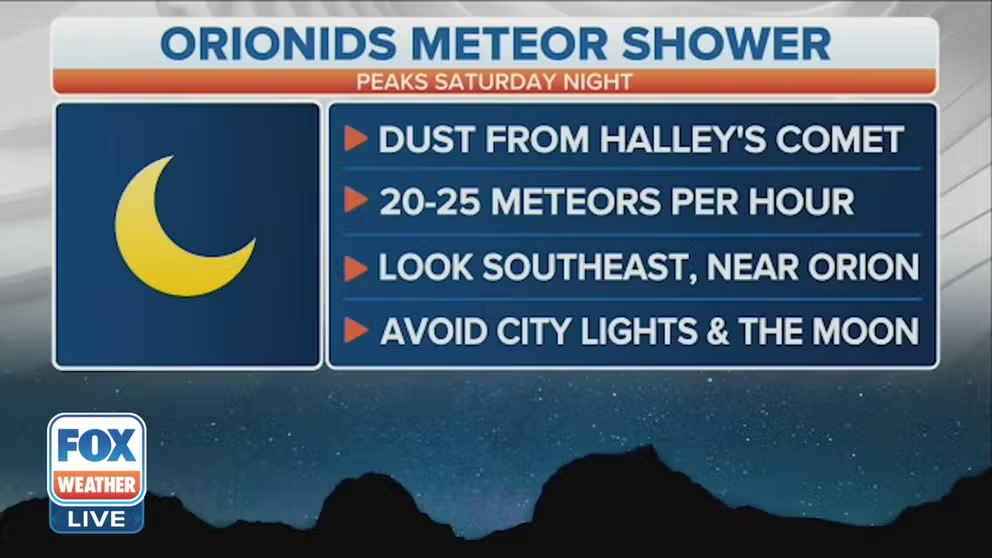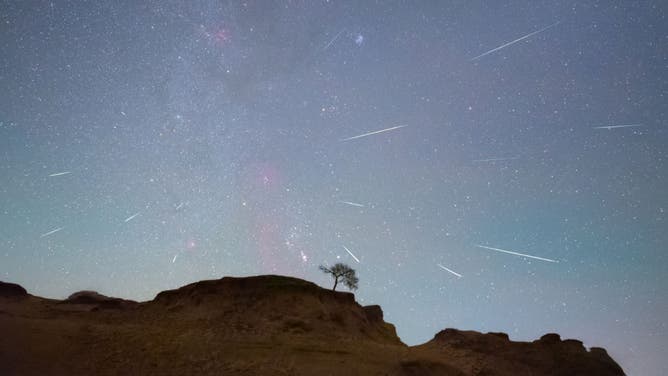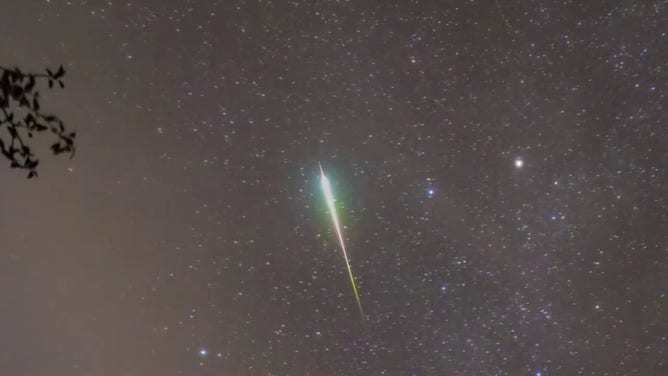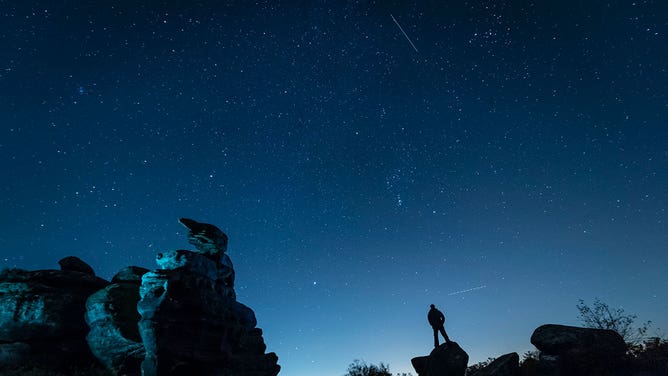Orionid Meteor Shower peaks tonight as Earth passes through Halley's Comet dust
While Halley's Comet only becomes visible to Earth every 76 years, the planet passes through the comet dust every October, providing the source for the spectacular Orionid Meteor Shower.
Orionids meteor shower peaks Saturday night
Originating from the Comet IP/Halley, also known as Halley's Comet, the Orionid meteor shower peaks across the Northern Hemisphere every October. This year, the peak activity happens on Oct. 21, offering the best chance to see the meteors in action.
Skygazing season is upon us as fall temperatures have arrived, and clear skies are prime for spotting the Orioind Meteor Shower, which peaks Saturday night.
Originating from the Comet IP/Halley, also known as Halley's Comet, the Orionid meteor shower peaks across the Northern Hemisphere every October.
While Halley's Comet only becomes visible to Earth every 76 years, Earth passes through the comet dust every year between September and November, providing a spectacular show courtesy of the elusive comet. The Orionid Meteor Shower is named for the point in the sky where the meteors appear to come from – the constellation Orion – which serves as a guide to help skygazers determine what meteor shower they are seeing. But it is not the source of the meteors.
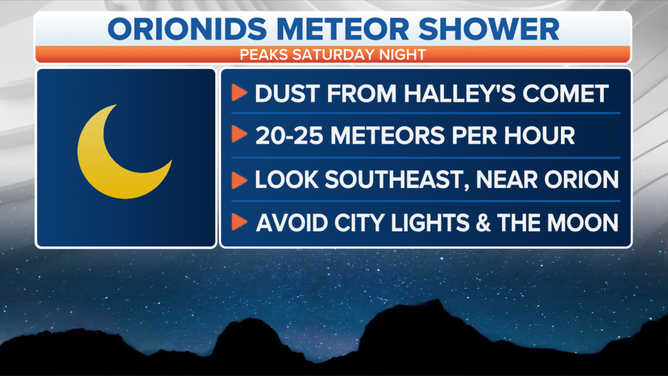
Facts about the Orionid Meteor Shower.
(FOX Weather)
This meteor shower is considered one of the year's best, as the Orionids are known for their speed at 41 miles per second and brightness, according to NASA. This year, the peak activity happens on Oct. 21, offering the best chance to see the meteors in action.
What does an Orionid meteor look like?
The sheer speed of the Orionids makes them unique, traveling at about 148,000 mph into Earth's atmosphere, according to NASA.
Halley's Comet dust vaporizes as the planet passes through the lingering debris, sometimes creating colorful streaks of light. These can appear as glowing "trains" following a meteor and can last for several seconds up to several minutes, according to the space agency.
The Orionid Meteor Shower is also known for producing fireballs, or explosions of light. Check out a few examples of fireballs and colorful Orionids from past years below:
The Orionids should be visible across the Northern and Southern Hemispheres after midnight, starting in late September and can be spotted into late November.
What will the viewing conditions be like this year for the Orionids peak?
Under perfect conditions with a dark sky with a new Moon, about 23 meteors per hour could be spotted. As for the forecast, an overcast sky can hinder views of the meteor.

(FOX Weather)
This year, clouds will be a nuisance for many across the U.S. on the night of peak activity, including Texas, New England, the Pacific Northwest and the Midwest. Weather models show clouds covering about 50 to 100% of those regions on Saturday night, which is not ideal for spotting fast-moving meteors.
WATCH OUT FOR THESE ASTRONOMICAL EVENTS IN 2023
Those in Southern California, the Southwest, central Plains, and mid-Atlantic have a better sky-gazing forecast with few clouds expected.
At the start of the meteor shower peak on Oct. 20, a nearly 40% full Moon shouldn't provide too much light and steal the show from the Orionids. However, you don't have to wait for the peak shower activity to step outside and look up. A few days before the peak on Oct. 18 and 19, the sliver of a crescent Moon will offer better conditions to spot some shooting stars.
The Orionids continue to be active into November but will be harder to spot toward the end of October as the full Hunter's Moon happens on Oct. 28.
